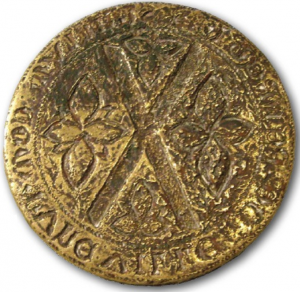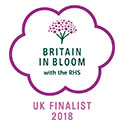Our Town

Penrith is located just off Junction 40 of the M6 and has excellent cross country links with the east and west coast via the A66. It lies just north of the River Eamont and close to the Lake District National Park.
Penrith was once the capital of Cumbria and is still the regional centre for trade, industry and services in the Eden Valley .
Children’s Play Areas
- Carleton Heights – open space adjacent to Birch Close
- Castle Park – park opposite Penrith Railway Station
- Castletown – playing field, Mill Street
- Fairhill – open space corner off Salkeld Road
- Milton Street – open space adjacent to Milton Street
- Pategill – open space off Prince Charles Close
- Scaws – open space adjacent to Pennine Way and multi-use games area
- Skate Park – by Penrith Leisure Centre
- Wetheriggs – open space off corner of Clifford Road/Wetheriggs Lane
Green Spaces, Recreation and Nature – Penrith benefits from a wealth of green spaces, including Castle Park, Coronation Gardens, Fairhill, Frenchfield and Thacka Glen. Allotments can be found at Salkeld Road, James Street, Brackenber Close and Folly Lane. Thacka Beck flows through the centre of the town and provides Penrith’s main water supply.
Thacka Beck Nature Reserve provides flood storage to protect homes and businesses in the town and is also a haven for wildlife. Accessed from Cowper Road or Bowerbank Way, the Nature Reserve is now a popular area for local people and visitors to enjoy a walk and observe wildlife. Waymarkers provide information about wildlife and flora and fauna along paths meandering through the reserve.
Historic Penrith – The town’s heritage can be traced back to the Romans, who developed the town as a military centre. Until 1070, Penrith was part of the Kingdom of Scotland and Strathclyde. This strong historical connection to Scotland is apparent in the 13th Century Seal of Penrith (image below) which appears in various locations around the Town, for example, in a stained glass window in the town hall. The seal can also be seen on wayfinder signs all around the town.
Heritage – Now in the care of English Heritage, the ruins of Penrith Castle originally built by Ralph Neville as a defence against Scottish raids, became the luxurious residence of the Duke of Gloucester, who later became King Richard III. Surviving to their full height, the Castle Walls stand in what is now Castle Park, originally laid out in 1923 as recreational grounds for the people of Penrith. The War Memorial Gateway, which is dedicated to those who lost their lives in the Boer Way, now marks the entrance.
Visitors to Penrith can explore the town’s rich heritage buildings and cobbled lanes. The Rotary Club of Penrith have made information available for self-guided tours around the town, encouraging visitors to take in many of the heritage landmarks. Burrowgate and Sandgate are the two oldest streets dating from the 13th Century.
High above the town on top of Beacon Hill is the Penrith Beacon, a monument built in 1719 on a spot where beacons have been lit in times of war and emergency since the time of Henry V111. Tree maintenance has been recently undertaken. It is possible to walk up to the Beacon and from there get a magnificent view on a clear day across the Eden valley to the hills of Lakeland. A sculpture in Coronation gardens depicts metal flames in a circular pattern, evocative of a Beacon Fire. A poem refers to the Border Reiver times and includes some known dates when the Beacon was lit as a warning. The Beacon will play an important part in the WW1 Commemoration events later in 2018.
Penrith and Eden Museum – The museum aims to collect, preserve and display material reflecting the history and culture of Penrith and Eden. Open Monday to Saturday 10am to 4pm. Find out more on the Penrith and Eden Museum website.
Penrith Tourist Information – This helpful team can help you make the most of your visit. They provide information about where to stay, where to eat, things to do and how to get here.
The office is open 10.00am to 5.00pm Monday to Saturday and 11.00am to 4.00pm Sunday.
The centre is based at Middlegate, Penrith, Cumbria. CA11 7PT. Phone: 01768 867466.
Use the following email link to contact the tourist Information Centre:
pen.tic@westmorlandandfurness.gov.uk
Penrith Railway Station – opened in 1846 and is now a grade 2 listed building. It is situated close to the centre of Penrith, directly opposite the ruins of Penrith Castle. Virgin Trains now operate the station, which they have renamed ‘Penrith North Lakes.’ Buses stop at the station and there is a manned ticket office as well as a Fast Ticket Machine. Car parking is available along with a taxi rank. There are also disabled toilets.
Approximate journey times:
- 3 hours 44 mins direct train from London Euston
- 1 hour 36 mins direct from Manchester Piccadilly
- 2 hours 35 mins direct from Birmingham New Street
What to do if you cannot access parts of this page
We want to ensure that everyone can access our information and we are working to improve our website. Please contact us if you need information on this website in a different format like accessible PDF, large print, easy read or in an alternative format.
We will consider your request and respond to you in ten working days.








